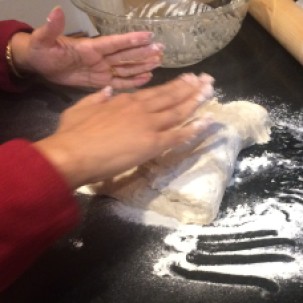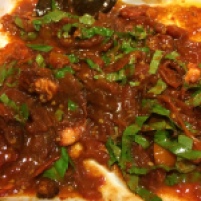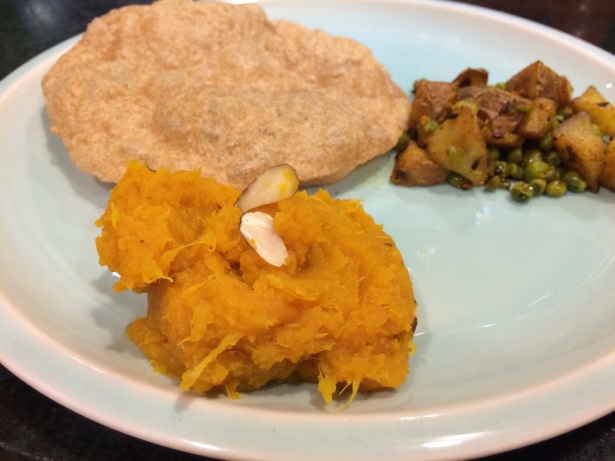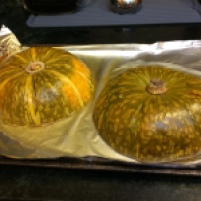In the year 2000 Time Magazine ran a cover story on something that it had probably never given such prominence to before. It was a grain—a variety of rice. The cover proclaimed that this variety of rice had the potential to save a million kids a year because it was yellow when milled instead of white. In pictures, the grains have a translucent glow as if imbued with saffron or turmeric.
But it contained neither. Rather, the yellow showed the presence of beta-carotene—the same compound that makes carrots orange—synthesized by the grains themselves as they formed inside the spikes of grass. Despite being a purely humanitarian endeavor, it was given the marketing moniker ‘Golden Rice’: a name suggested by Thailand’s ‘Condom King’, who had successfully marketed another, very different, public health product. The inventors hoped that since the human body can turn beta-carotene into Vitamin A, it could help the poverty-stricken rice-eating populations of the world where Vitamin A deficiency is an often fatal problem.
The Time Magazine article warned of controversies to come, and sure enough, in the ensuing 16 years, they have. While golden rice has had plenty of technical challenges to work through, it has also run into a number of regulatory and political headwinds.
This is because golden rice is genetically modified. The original prototype included two foreign genes: one from the daffodil, and one from a bacterial species.
By and large, the foodie public is not yet comfortable with genetically modified foods. Their thought-leaders, the mavens of the new food politics, turned against golden rice almost instantly; Michael Pollan called it the Great Yellow Hype, while Marion Nestle, in 2013, said on her website Food Politics that she could not believe people were still talking about it. The opposition reached an apogee when Greenpeace activists destroyed fields of golden rice trials in the Philippines (while claiming that the vandalism was done by the farmers).
While there is widespread skepticism about genetically modified foods, public opinion is contrary to settled science and betrays several misconceptions. But apart from the general debate, each genetically modified product has also to be understood in its own terms.
The orange hue
Gold—or less grandiosely, yellow-orange—is a color that nature is quite adept at. Pumpkins and carrots come to mind, but there’s no limit to the orange hues: fruits, and petals, and yellow corn, and egg yolks, and butter; leaves during autumn; and so on. When you see the yellows, oranges, or reds out in nature, it is a clue that the plant has been manufacturing pigments known as carotenoids. Each of these pigments, down to the molecule level, is a precise chain of 40 carbon atoms with hydrogen atoms, and sometimes oxygen atoms too, hanging on like amulets on a bracelet.
One of these is beta carotene. A 40-carbon, 56-hydrogen chain with loops at each end, it is a celebrity because of how the liver processes it, if eaten with some fat—it splits each 40-carbon chain into two molecules of Vitamin A. And Vitamin A is crucial for our eyes and immune systems.
But plants do not create beta-carotene in order to nourish us. It is crucial for them, too. It collects light energy and so helps leaves photosynthesize. It plays the role of an antioxidant by intercepting free radicals.
The white on rice
You might ask: if beta-carotene is so important for plants, why did rice need such expensive intervention—why doesn’t rice create its own beta-carotene out in nature?
But that question would be misguided in two ways. For one: rice does indeed create its own beta-carotene—where it needs it, which is in the tissues that photosynthesize, mostly the leaves. If you look closely, you see a dent in one tip of the torpedo-shape that is a single grain of rice. This dent is where the germ used to sit—the germ that would turn into a new rice plant if sown, that was removed during the milling process. Since the germ has to photosynthesize as it grows, it does have the capability to create beta-carotene and other carotenoids.
But not the surrounding starch—the food for the germ as it grows, which is also the part we eat. This starchy part is very low in micronutrients and contains no beta carotene.
The other reason that question would be misguided is the deeper one: there is no “rice” out in nature. The species Oryza sativa is entirely a cultivated species; its closest relative that it probably arose from, known as brownbeard rice (Oryza rufipogon), is considered a weed when found in rice fields, and, when harvested together, its grains are winnowed out like chaff.
The ancients created the rice we eat. Their needs drove early rice evolution: they needed a crop that was easy to harvest, so they selected plants whose seeds didn’t shatter and fall when ripe; they needed a crop that was easy to plan for, and rice adapted in response to ripen all at once instead of in dribs and drabs.
They bred it to yield much more grain than the wild plant they found, and bred starch into the grain. They also bred the red color out. Did they just prefer white grains? Perhaps, but it is more likely that they got white rice as a side-effect of breeding traits they actually cared about, like making the hull easier to remove. Regardless, red rice, as the wild brownbeard is also known, wasn’t red because of carotenes, but rather, the same kind of tannins that give red wine and chocolate their deep color.
The rice crop has seen many improvements since the days of the ancient farmers. Many of these came in the 1960s, under research projects that are given the umbrella term of ‘Green Revolution’.
Though many of the Green Revolution improvements had to do with higher yield, the folks at the International Rice Research Institute (IRRI), under whose aegis these projects took place, had their eye on nutritional factors as well. A haunting story is often told about Peter Jennings, the legendary breeder: he had hunted for yellow grains of rice out in the fields for decades, hoping to find a rice plant that had spontaneously mutated to create yellowness. He was well aware of nutritional deficiencies that made rice a less-than-ideal staple food.
This isn’t as vain of a hope as it sounds. Occasionally farmers will find an oddity among their crop that has a beneficial trait or two, and sometimes that oddity will be bred into a well-known variety. The story of Cheddar Cauliflower, the bright yellow cauliflower sold in upscale grocery stores, played out this way.
Regardless, the decades-long hunt for spontaneous beta-carotene rice turned up fruitless. This led Peter Jennings to suggest one day in 1984 that if he had his druthers, the science of biotechnology that lay over the horizon would take on the challenge of creating yellow rice. Two researchers, Dr. Ingo Potrykus and Dr. Peter Beyer, took up the challenge.
The beta carotene assembly line
In the early 1900s the Ford Motor Company revolutionized car manufacture with the assembly line: rather than each car being built up on the spot in a bespoke kind of way, its manufacture moves through stages, each of which focus on doing the same step over and over.
As with much else, biology got there first. Within each plant cell, which is essentially a factory, several assembly lines proceed simultaneously, each putting together the chemicals that the plant needs.
One of these assembles the 40-carbon beta-carotene. It is put together from pieces as though Lego blocks were being connected.
One of nature’s most common Lego blocks is a 5-carbon block known as isoprene; it is veritably the 2×4 brick of biochemistry. You might not have heard of it, but if you wander among oak trees on a hot, sunny day, chances are that their leaves are emitting an abundance of isoprene into the air; if you are familiar with the smell of rubber tires in the heat, chances are you have smelled it.
Considering that isoprene is a 5-carbon block, and we want to get to a 40-carbon chain, you would be absolutely justified in relying on arithmetic to deduce that it takes 8 blocks of isoprene. Although it isn’t isoprene itself that takes part in the chemical assembly line, but rather a form known as activated isoprene.
Let’s zoom in on a segment of the assembly line. The cell has already created 20-carbon chains out of 4 isoprene blocks, the steps of which we won’t go into. Where we begin, two of these 20-carbon chains are stitched together to make a 40-carbon, 64-hydrogen chain. This is phytoene, a colorless compound.
Watch carefully, because the creation of phytoene is an important step. It is colorless, but most of the warm colors in nature get their start as colorless phytoene: it is the first step in the creation of a number of yellow, orange, and red pigments.

Carotenoid-containing fruits and veggies, that all get their start as phytoene (source: Carotenoid Society)
The next step is important too. This is phytoene ‘desaturation’—a word that contains multitudes. It is also the step that results in color. How does this happen? The 40 carbons in the chain link not only to their neighbors along it, but also manage to hold on to 64 hydrogen atoms besides. In this step, the chain relinquishes 8 of those hydrogen atoms, and 8 carbon atoms hold on to their neighbor doubly instead. This is why this is known as ‘desaturation’—it now has unfilled slots that used to be occupied by hydrogen atoms.
It also changes how it interacts with light. Phytoene can only absorb high-energy light from the UV spectrum that is invisible to us. Since it lets all visible light through, it appears colorless. But after desaturation, almost all visible light except the low-energy red gets absorbed; hence what we have now is a deep red compound known as lycopene.
In fact, it is exactly the deep red we know of from tomatoes.
We are almost there. The next step that happens is a looping of the ends the 40-carbon chain. Once again, this step changes how it absorbs energy from visible light; this new form mostly absorbs the blues and cyan, so it appears orange to us. This, finally, is beta-carotene.
The genes
I called out two steps above as having special significance; one was the creation of phytoene, and the other was its desaturation. This is because these are exactly the two steps where rice needed intervention in order to create yellow grain.
In truth, it isn’t as if the researchers had to create the beta-carotene assembly line from scratch. Like we went over before, rice is not a stranger to beta carotene; it is synthesized in all green tissues that photosynthesize. But the assembly line in the starchy part of rice was broken in two key steps.
Faced with a broken assembly line in a modern factory, one frequently needs to tinker with the computer systems that run it, rather than mess with the nuts and bolts; and so it is with the plant cell. The problem lay in the genes.
Researchers had noticed that the starch did accumulate plenty of the 20-carbon Lego blocks I mentioned earlier, but no phytoene. This step happens under control of a particular gene whose name—psy—seems to come out of a spy novel, but really just stands for what it does—control the synthesis of phytoene.
Rice does have a psy gene, but its function is turned off in the starchy grain. But, siblings of the rice psy gene are found in other plants as well. Let us pause here to appreciate a fact that, while it has completely swept the biological sciences since Darwin and Mendel, is still not well understood by lay-people.
There is deep unity among different life forms—whether an ant, a sea urchin, or a palm tree—on the level of the genes. My cells may not make chlorophyll, thus I am not green. But my genes speak the same language as the genes of the palm tree: they just choose different sentences. Among close relatives long snatches of the genetic code are often much the same.

Daffodils
So when it came to seeking a psy gene to fix the broken step, researchers could turn to the vast library of psy genes available in other plants. They chose the psy from a paragon of yellowness, the daffodil, whose psy plays a part in the lovely color of its petals.
They announced in 1997 that their experiment had been successful. Close to six hundred seedlings of a Japonica rice variety were bombarded with the daffodil psy gene using a gene gun. In the end, they had 47 that contained phytoene and were fertile enough to propagate.
Remember, no color yet, because phytoene is colorless. The second key step—that of desaturation of phytoene, the step that produces the color—had yet to be done.
For this, they turned to an experiment that had been performed by Peter Bramley earlier on tomatoes. He had found that tomatoes could be induced to be twice as red by splicing in a desaturation gene from a bacterial species. This is because twice as much phytoene could be desaturated, producing twice as much red-colored lycopene.
The researchers, Dr. Ingo Potrykus and Dr. Peter Beyer, relied on this same bacterial gene, crtI, in their experiment. It worked—once again, speaking to the unity of three very different life-forms; rice, tomatoes, and—bacteria.
However, instead of becoming red due to accumulating lycopene like Peter Bramley’s experiment with tomatoes would predict, the rice grains seemed to be turning yellow, showing the presence of beta-carotene.
Remember, turning red lycopene into yellow-orange beta-carotene involves the additional step of looping the ends of the 40-carbon chain. Who performed that step?
It turns out that the researchers caught a break. Some parts of the defunct assembly line in the grains still functioned; when molecular robots detected the presence of lycopene, they kicked in and looped the ends, thus producing beta carotene on their own.
They had yellow rice.
The sequel
This is where things stood in 2000, when Time Magazine announced the breakthrough of golden rice. But the amount of yellow in the rice, while of momentous importance in showing that it could be done, wasn’t quite enough to actually help with VAD. As Michael Pollan framed it in the New York Times, an 11-year-old child would have to eat 15 pounds of golden rice in order to meet her daily requirement of Vitamin A. Although this was based on incorrect assumptions (golden rice does not have to provide the entirety of the daily requirement, since no one is at zero or they would be dead), it compellingly relayed the fact that this version really didn’t have sufficient beta carotene.
In reality, the product as it stood then was merely an alpha—a proof of concept—as the software industry calls it, or a pilot, as the television folks might.
The rice they created was a pale yellow in color; if the beta-carotene content had been more substantial, that fact would have advertised itself as a deeper orange hue.
A follow-on team from Swiss biotech giant Syngenta achieved this by using the psy gene from corn (maize) to replace the one from the daffodil. Not only is their version of golden rice a deep orange color, it also has enough beta carotene for the child of Michael Pollan’s imagination to meet his or her daily requirement by eating a bowlful.
While the gene from maize met their scientific needs, it is also a perfect choice for illustrative purposes.
Both rice and maize are grasses, so their psy genes are more closely related to each other than the one from daffodil. Perhaps this is why the maize psy was considerably more effective in creating phytoene.
But beyond that fact lie other similarities. Much like the ancient form of rice, the ancient form of corn (teosinte) is not eaten. Much like rice, maize has seen a number of changes over thousands of years to turn it into a crop: the kernels increased in size and number; the yield improved; the kernels lost their husk. Much like rice, beta carotene is not physiologically needed in the kernels of corn: hence the plant never produced it.
(In fact, as Dr. Peter Beyer told me over the phone, nor is beta-carotene physiologically needed by the very vegetable that its name derives from—the carrot.)
But here is the difference: for poorly understood reasons, maize turned out to have a very malleable genome. The Native Americans bred it into astonishing colors and sizes; the maize genome today is massive and has come a long way from the genome of the ancient, inedible teosinte.
In 1779, Europeans came across a yellow, sweet variety that had been bred by the Iroquois tribe. Clearly, an Iroquois farmer at an earlier time had succeeded where Peter Jennings had failed: he or she had discovered yellow kernel plant somewhere out in the fields; which they then decided to favor and breed. This type of chance mutation could very well have turned up for rice, but the fact is, it didn’t.
Though just as absurd from a plant physiology perspective, corn and rice both had the potential to create beta carotene in their grain. Yellow corn was found art. Yellow rice, on the other hand, had to be intentionally sought and created.
(I want to thank Dr. Peter Beyer of the University of Freiburg for his invaluable help in reviewing and checking my facts.)
I would love to hear your thoughts in comments below. Follow me on Twitter, like my Facebook page, or email me at aneela -at- theoddpantry.com. You can also subscribe to this blog here:











































 Nature made tomatoes delicious but She also drenched them in unappealing wateriness. All tomato sauces are based on rescuing the flavor out of the swamp. It is simply a matter of technique.
Nature made tomatoes delicious but She also drenched them in unappealing wateriness. All tomato sauces are based on rescuing the flavor out of the swamp. It is simply a matter of technique.
























 Just think—what is pumpkin, but a combination of excrutiatingly delicious orange pumpkin matter, and water. Water is water. It’s great. Stuff of life, 90% of the body, et cetera, et cetera. But it isn’t where the deliciousness lives. In fact, it mingles with the deliciousness of pumpkin flesh and—waters it down.
Just think—what is pumpkin, but a combination of excrutiatingly delicious orange pumpkin matter, and water. Water is water. It’s great. Stuff of life, 90% of the body, et cetera, et cetera. But it isn’t where the deliciousness lives. In fact, it mingles with the deliciousness of pumpkin flesh and—waters it down.













 Once upon a time, the dark cold months were months of deprivation. No green shoots appeared in the ground, no fruit swelled on the trees. The young ones went without, or raided the underground cellars for the grains and husks that they shared with their rodents. But the old ones said no, look, here’s what you do. You collect your bounty in the sunlit months; then you preserve it to feast on in the dark months.
Once upon a time, the dark cold months were months of deprivation. No green shoots appeared in the ground, no fruit swelled on the trees. The young ones went without, or raided the underground cellars for the grains and husks that they shared with their rodents. But the old ones said no, look, here’s what you do. You collect your bounty in the sunlit months; then you preserve it to feast on in the dark months. But at first, the young ones shrank from the taste. “Pooh!” they said. “We see that this is imbued with the deep orange of a carrot, but the saltiness scours our tongue. And the mango—did you have to preserve it when green and sour? Could you not have waited for its velvety sweetness to emerge? Ah, we would give our firstborn for the taste of a sweet mango now! That clay jar under the ground—could that be cabbage? But heed the fumes—did a dog die in there?”
But at first, the young ones shrank from the taste. “Pooh!” they said. “We see that this is imbued with the deep orange of a carrot, but the saltiness scours our tongue. And the mango—did you have to preserve it when green and sour? Could you not have waited for its velvety sweetness to emerge? Ah, we would give our firstborn for the taste of a sweet mango now! That clay jar under the ground—could that be cabbage? But heed the fumes—did a dog die in there?” “But heed,” the old ones intoned, “while fermentation is hip, do not forget, it is not the only way. Remember, water is needed for all of creation, and all of creation harbors it; the bad microbes desire it with a thirst so deep that it might be a thirst for life itself. What if one were to draw the water out of our foods, and leave it shrunken and dry; the microbes would find it as bare as a moonscape and would not deign to enter. Then: what if one were to cover the whole thing in oil, perhaps an oil such as from the mustard plant, that is practically a warrior against microbes itself, what then?”
“But heed,” the old ones intoned, “while fermentation is hip, do not forget, it is not the only way. Remember, water is needed for all of creation, and all of creation harbors it; the bad microbes desire it with a thirst so deep that it might be a thirst for life itself. What if one were to draw the water out of our foods, and leave it shrunken and dry; the microbes would find it as bare as a moonscape and would not deign to enter. Then: what if one were to cover the whole thing in oil, perhaps an oil such as from the mustard plant, that is practically a warrior against microbes itself, what then?” This is the basic method I have used with such disparate ingredients as
This is the basic method I have used with such disparate ingredients as 









 I’m guessing that not many of you will have heard about the dal or bean I’m about to write about today. I certainly hadn’t. It is a small flattened bean, multicolored in a spectrum that goes from beige to dark coffee brown. It is commonly known by the rather picturesque name of ‘horse gram’; and if you think that a word like that harks back to a time when crops were named after farm animals, while animals were named for their use on the farm, you’ve got horse gram pinned.
I’m guessing that not many of you will have heard about the dal or bean I’m about to write about today. I certainly hadn’t. It is a small flattened bean, multicolored in a spectrum that goes from beige to dark coffee brown. It is commonly known by the rather picturesque name of ‘horse gram’; and if you think that a word like that harks back to a time when crops were named after farm animals, while animals were named for their use on the farm, you’ve got horse gram pinned. Some practical matters
Some practical matters










